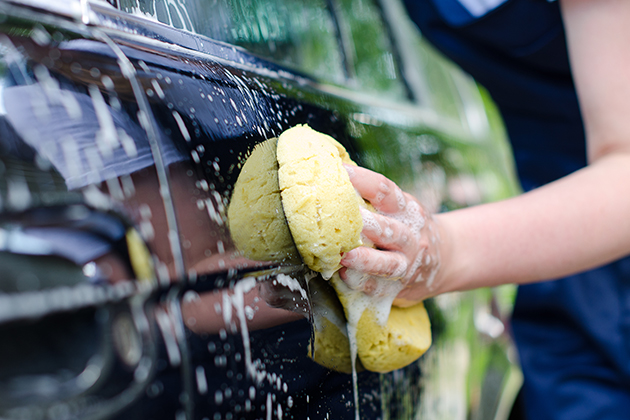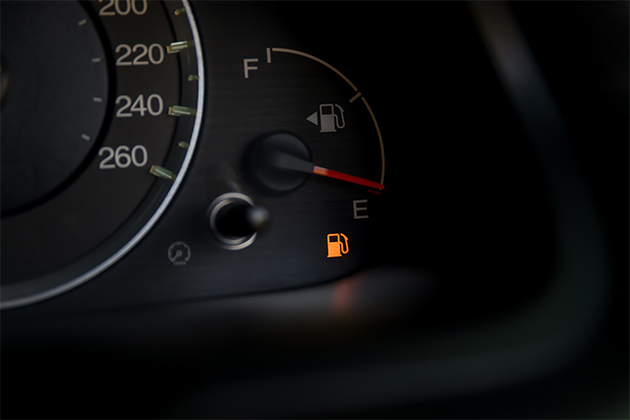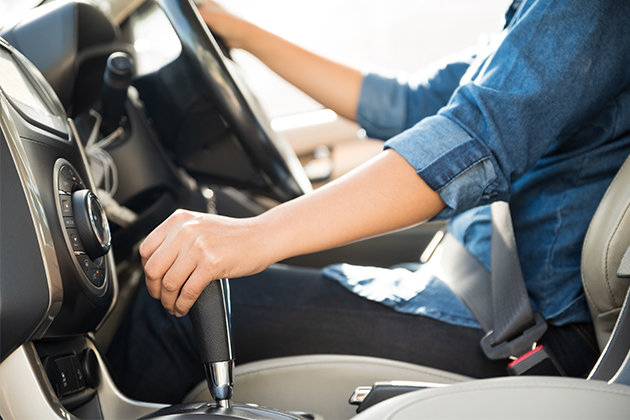Can you sort the myths from the facts when it comes to your car?
Myths about cars and the maintenance of them, along with their quirks and shortcomings have been circulating for more than a century.
Some are purely fiction but have become widely accepted as fact, while others sound like load of bunkum but are actually the real deal.
We put 13 motoring myths to the test and try to separate fact from the fiction; the real from the ridiculous.
1. Putting your car's remote control against your head increases its range
Verdict: Often.
As bizarre as it sounds, holding the key remote to your head can actually work, with your body amplifying the signal like a giant organic aerial. However, holding the key remote to a metal object like a pole can have a similar effect, electromagnetically pushing the signal further.
Plus, just like holding a mobile phone up for better reception, holding the keys at head height can also increase the effectiveness of the signal, removing the interference of other objects such as parked cars.
While this trick can actually work, there are no concrete explanations as to why it works, nor will it work every time. And if you are to try it, pretend you are scratching your head so others in the parking lot don’t think you have lost your mind along with your car.
2. Taking your car through a fully automatic car wash is better for the paintwork than washing by hand
Verdict: Maybe.
This myth’s credibility is dependent on the person washing the car. An automatic carwash is far better for your paintwork than dishwashing liquid and a sponge with a dubious history.
Many well-meaning car owners unintentionally damage their paintwork simply by using a dirty cloth. Also, running cloths or sponges over the lower part of the car without thorough rinsing is a sure-fire way to mark the paint. Using too little water can damage paint for the same reason.
Without good quality polish your paint is unprotected against the elements. Either pay good money for dedicated car washing products and clean and polish carefully, or the carwash is the safer choice.

3. Using a fuel with a higher octane rating than the fuel suited to your car can clean the engine
Verdict: False.
We are yet to be convinced that additives in some premium fuels can clean fuel systems and other internal engine parts. The slightly smoother running and mild vehicle performance improvement often experienced by motorists using premium fuels is far more likely to be a result of the fuel’s higher octane.
The higher octane rating in premium fuels – 98RON or 95RON – versus 91RON is essentially stating the amount of compression the fuel can handle before it ignites. You want your fuel to burn cleanly,and in a controlled way and not detonate uncontrollably, which produces that awful knocking, pinging noise.
The more the fuel/air mixture can be compressed without igniting, the less likely it is to detonate and the more performance that can be eked out of it.
So a car tuned for premium unleaded will run well on it, and the fuel will burn cleanly – but we haven’t seen any independent scientifically gathered evidence that proves it can clean engines.
4. If you use cruise control when driving in the rain your car will hydroplane and lose control
Verdict: False.
It can be risky using cruise control in changeable conditions, however your car will not suddenly begin hydroplaning when you switch cruise control on in wet weather.
As its name infers, cruise control is designed to be used under steady driving situations. It will attempt to keep the car at a constant speed set by the driver. So if it’s been set to 100 km/h speed, the car will enter a corner at 100 km/h unless the driver intervenes. That’s where the trouble can start when using cruise control in less than ideal conditions. In other words, it’s ultimately the driver’s responsibility to ensure the car is safely in control. So, assess the conditions of the road and adjust the vehicle’s speed accordingly.
5. Always let your car warm up before you drive it
Verdict: False.
Your grandad might have warmed up his prized Holden – and some of the earliest cars even required the driver to heat the oil pan with a small fire before they hit the road – but modern cars don’t need the same treatment.
The requirement to warm up a car’s engine is less relevant nowadays due to vastly improved oil technologies, that better protects an engine on cold start-up, which is when most per cent of total engine wear occurs. Still, where possible gentle driving is recommended after starting the engine while it warms up. This style of driving will also increase fuel efficiency.
6. All else being equal, automatic cars use more fuel than manuals
Verdict: Not always.
Many traditional (torque converter) automatics will quote fuel figures that are slightly higher than their manual counterparts on the car brochure, but as technology progresses and powertrains evolve, this is also changing.
Dual-clutch transmissions and Continuously Variable Transmissions (CVTs) are beginning to change the game, with some using less fuel than their traditional manual counterparts.
7. Regularly running your fuel tank close to empty can cause damage
Verdict: True.
Though the car would have to be running on fumes constantly for a long period of time, this myth has merit. Over time, sediment can build up in the bottom of the tank and draining the tank can pull the gunk into the fuel filter faster, slowing your car to a coughing halt.
In modern cars, the electric fuel pump is located inside the fuel tank and should be surrounded by cool fuel – leaving it beached can cause it to overheat and need early replacement. And, of course, fuel surge is not good for an engine; stopping and starting the revolutions due to low fuel delivery can cause undue wear and tear.

8. It's good to take your car for a long drive occasionally, to help clear out the cobwebs
Verdict: True.
Some say a long drive can be far better for a car than keeping the kilometres down by parking it for long periods, and it’s true. Only doing short trips fails to give any part of your car a decent workout at a healthy operating temperature – something it really needs.
The majority of engine wear occurs when an engine is started cold, and even though you don't need to sit there with it idling to warm it up, it does require a few kilometres of driving to get to an optimal operating temperature.
Continuing to drive, especially at constant open-road speeds, will help burn off any water or fuel that might be in the oil system. It will get the cooling system flowing fully, and potentially burn off carbon build-up that might be in the cylinder head.
RELATED:
How to maintain your car when it's not in use »
9. Putting your automatic vehicle into neutral while at traffic lights will save fuel and the transmission
Verdict: False.
Automatic transmissions are designed to be able to handle the vehicle being stationary with the drive selected. While a slight reduction in engine load may save fuel over time, the savings are minuscule.
Doing this also introduces the potential for increased wear and tear on gearbox, and it also takes your attention from other more important things you should be doing when behind the wheel.
10. Resting your hand on the manual shifter can damage the gearbox
Verdict: True.
Crack open a gearbox that’s done a few kilometres, and you will be able to tell if the driver rests their hand on the shifter while driving. The damage isn’t to the gears themselves, but the parts that select the gears.
Pressure on the shifter forces these parts into each other and wears them down. It’s best to break this habit in case it eventually breaks something in the gearbox. Even better, it will get both hands back on the wheel.

11. Old cars are safer than new cars because they were built out of thicker steel
Verdict: False.
The great old tanks we (or our parents) drove in the halcyon days of the family sedan seem so solid and sizeable next to many of today’s vehicles.
However, evolving technology continues to revolutionise the automotive landscape, particularly when it comes to safety, and people both inside and outside of today’s cars have the advantage of airbags, collapsible steering columns, crumple zones, deformable bumpers and gas-charged pop-up bonnets, plus active and passive driver aids can lessen or even avoid a collision completely.
In many instances, thicker steel cannot compare to the safety features now offered on even the cheapest runabouts, and while a crash between the latter and a big old tin-top may prove disastrous, a newer car will typically be far better at protecting its occupants and those in other cars, as well as other vulnerable road users such as pedestrians and cyclists.
RELATED: The 10 safest second-hand cars under $10,000 »
12. You can save your brakes from wearing out by using the gears to slow down
Verdict: True, but...
Brake pads and discs are perishable parts, and a front disc and pad combination can cost upwards of $500. Replacing pads and rotors on two or even all four wheels is an even bigger hit to the hip pocket, however this expense is relatively cheap when compared to the cost of repairing or replacing a gearbox.
Gearing down and using engine braking to slow your vehicle is all well and good if you are also using the brakes, but using the engine and gearbox alone to slow the vehicle can put undue stress on the powertrain, which is far more expensive to service, repair or replace.
13. Korean cars are below par compared with Japanese and European cars
Verdict: False.
They were once the cheap and cheerful A-to-B alternative, and the price tag reflected the quality of the offering. But that was a long time ago, and Korean car manufacturers, such as Hyundai and Kia, now have some of the best equipped and best value cars in the business. They're consistently among the top 10 sellers, garnering awards and praise from the harshest motoring critics.
While the old cheap and cheerful (and therefore sometimes unreliable or low-quality) stigma still haunts some would-be buyers, Hyundai’s five-year and Kia’s unbeatable seven-year warranty plus long lists of safety and convenience features are the Korean's primary ways of stamping out said concerns.
Need extra motoring advice?
Our friendly Motoring Advice team provides free motoring advice to RAC members from Monday to Friday, 9am to 5pm.
Last updated: April 2021
